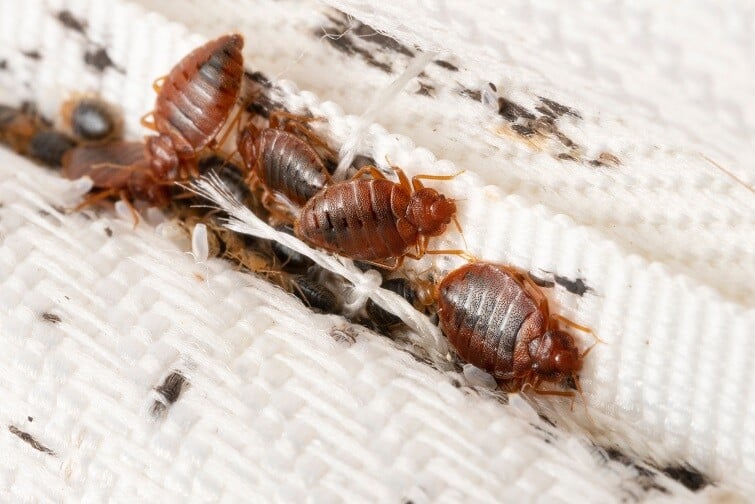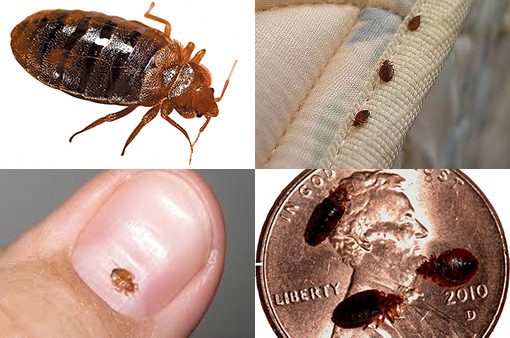Local Bed Bug Exterminator: DC Heat Treatment Providers Available
Wiki Article
Checking Out the Science Behind Bed Bug Warm Treatments as a Sustainable Bug Monitoring Method
One such approach that has actually gotten grip in recent years is the use of warmth treatments to combat bed insect invasions. The ins and outs of just how heat efficiently eliminates bed bugs and the wider ramifications for lasting parasite administration methods make this a topic worth checking out additionally.Bed Pest Warm Treatment Process

Thermal Fatality Point for Bed Pests
Subjecting bed pests to elevated temperatures past their thermal resistance range is crucial for accomplishing efficient elimination in heat treatment procedures. The thermal fatality point for bed insects describes the temperature at which these bugs can not survive. Research study shows that bed bugs begin to die when subjected to temperatures over 113 ° F(45 ° C) for a sustained period. As the temperature boosts, so does the death rate of bed insects. At around 118 ° F(48 ° C ), bed pests start to die rapidly, with a death rate of nearly 99% within mins of direct exposure. This demonstrates the sensitivity of bed insects to heats and highlights the efficiency of warmth treatments in removing problems. By reaching and preserving temperatures over the thermal death point for bed bugs, insect administration experts can make sure detailed elimination of bed bug populaces, consisting of hard-to-reach locations where chemical therapies might be less reliable. Understanding the thermal death factor for bed pests is necessary for implementing successful heat therapy methods and achieving sustainable bug monitoring outcomes.Advantages of Heat Treatments
Having developed the vital thermal fatality point for bed bugs, it is imperative to currently check out the substantial benefits that heat treatments supply in properly eliminating these durable parasites. One of the primary advantages is that warm can permeate deep right into crevices and fractures where bed bugs conceal, ensuring that even the most hard-to-reach areas are heated up to deadly temperatures.Furthermore, heat treatments are eco pleasant and safe, making them a lasting insect monitoring strategy. Unlike chemical pesticides, heat treatments do not leave damaging deposits that can posture threats to human health and wellness or the environment. This aspect is particularly important in sensitive environments such as hospitals, schools, and houses where chemical use might not be preferable.
Additionally, heat treatments have a high success price in removing bed pest problems in a solitary treatment, decreasing the need for multiple gos to and decreasing disturbance to owners. This performance not just saves money and time yet also provides assurance to those managing bed insect problems.
Performance of Heat Therapy

Research study studies have actually regularly shown the effectiveness of heat treatments in attaining a high rate of bed insect mortality. Appropriately performed warm therapies can reach all the gaps and cracks where bed pests may be nurturing, guaranteeing a comprehensive technique to elimination. Moreover, heat treatments have actually the added benefit of eliminating bed pest eggs, which are frequently immune to check traditional chemical treatments. Generally, the performance of heat treatments in getting rid of bed pest infestations makes them a trustworthy and lasting parasite management method.
Sustainable Pest Management Conveniences
Implementing sustainable parasite monitoring methods supplies long-lasting advantages for both the environment and public wellness. By making use of approaches such as warmth therapies for pest control, we can reduce the dependence on unsafe chemical pesticides that can have damaging impacts on environments and human health and wellness - exterminator. Lasting pest monitoring methods aid in maintaining biodiversity by targeting certain pests without damaging non-target organisms, therefore preserving a well balanced ecological community
Furthermore, lasting pest monitoring practices add to the overall wellness and well-being of the general public. By minimizing direct exposure to poisonous chemicals made use of in conventional parasite control methods, warm therapies offer a more secure alternative for bug management in property, business, and public spaces. This reduction in chemical use additionally helps in protecting against pesticide residues from polluting air, soil, and water, securing ecological quality.
Conclusion
In over at this website verdict, bed pest heat treatments have actually been revealed to be a effective and sustainable parasite management technique. The thermal fatality factor for bed pests makes them susceptible to heat treatments, which have many advantages over conventional chemical treatments. The effectiveness of warm therapies in eliminating bed insect invasions while decreasing environmental impact highlights the potential of this technique as a lasting solution for pest control.The bed bug heat therapy procedure includes increasing the temperature within plagued areas to a level that successfully gets rid of bed pests and their eggs. By reaching and maintaining temperatures above the thermal fatality factor for bed pests, parasite monitoring specialists can make certain detailed removal of bed insect populations, including hard-to-reach locations where chemical therapies might be much less efficient. One of the primary advantages is that warmth can pass through deep right into fractures and gaps where bed pests conceal, making sure that even the most hard-to-reach areas are warmed to dangerous temperature levels. Unlike chemical treatments that may leave behind immune populaces, warm treatments offer a safe and eco pleasant option that can permeate deep into furniture, wall surfaces, and various other hard-to-reach areas where bed pests conceal.
The thermal death factor for bed pests makes them at risk to warm treatments, which have countless advantages over traditional chemical therapies.
Report this wiki page